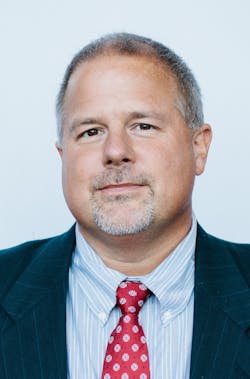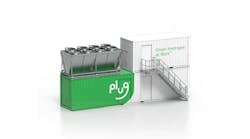Mark Feasel, president, smart grid – North America at Schneider Electric, explores what can be done to set up a more energy efficient, greener post pandemic world using energy-as-a-service (EaaS).
Mark Feasel, president, smart grid, Schneider Electric
It has been more than five months since most states in the US initiated their first COVID-19 lockdown and talks around reopening feels premature to many. Still, it is a critical time for leaders across business and government to quickly evaluate lessons learned and begin planning for a post pandemic world.
The lockdown’s effect on the environment and its influence on businesses and communities should increase our focus on resilience and sustainability. In early April, for example, shutdowns were widespread and daily global carbon emissions were down by 17 percent compared to last year. As we look towards the future and plan for recovery, we must also rethink our approach to sustainability and keep in the mind the environmental impact our businesses and communities can have.
So how do we plan for financial recovery, while investing in both resilientand greener infrastructure?
While reopening around the world will focus on rapidly increasing production and output, we now have alternative businesses models available that offer the flexibility to simultaneously invest in cleaner, more resilient energy infrastructure with little to no upfront capital outlay. Schneider Electric promotes and offers the energy-as-a-service (EaaS) business model that transfers technical, regulatory, and financial burdens off the energy consumers. Last year Schneider Electric and The Carlyle Group launched a joint venture, AlphaStruxure, to bring an “as-a-service” model and innovative funding approaches to public entities. AlphaStruxure is designed to develop digitally enabled infrastructure projects, leveraging EaaS, that meet the growing need for sustainable investment in critical assets and services.
Financing cleaner, more resilient energy infrastructure with flexible business models
Energy-as-a-service is transforming how organizations think about energy procurement and management by helping organizations reduce electricity use and achieve cost savings, while meeting sustainability and operational efficiency goals. Leveraging this model, organizations can partner with solution providers to actively manage their energy portfolio and financing to deliver services that result in guaranteed savings and uptime, with less performance risk and decreased capital burden.
EaaS reduces barrier to entry for microgrids
Energy and the infrastructure that supports our energy and power systems, is undergoing considerable transition as generation continues to decentralize and the demand for electricity grows, all while we experience the added uncertainties of today’s economy. As the pace of change accelerates, organizations face increasing complexities in energy and resource management. An EaaS model can help organizations balance their need to lead responsibly and reach new efficiencies with operational and financial challenges. It reduces the cost of entry toward traditional energy efficiency solutions and beyond, including distributed energy resources, such as renewable energy, and new load management and optimization solutions, such as microgrids.
Take for example the case of Montgomery County in Maryland. After experiencing the aftermath of a devastating storm that caused widespread outages, Montgomery County set out to find partners that could help mitigate the impact of future disasters by upgrading aging electrical infrastructure in a cost-efficient way. The county signed a 25-year EaaS agreement that allowed the county to install two advanced microgrids and upgrade its energy infrastructure with no money down. Now, the county has accomplished resilient and efficient energy without the budgetary pressure or operational risk.
Climate activism cannot take a back seat during the pandemic
The coronavirus pandemic has delayed, and even halted, many electrical infrastructure projects across the US. In fact, Wood Mackenzie’s latest review reports that today’s pandemic will delay microgrid development project origination and timelines over the next year as shelter-in-place orders have delayed permitting, construction and interconnection processes. Yet, we still face many of the key infrastructure and resilience concerns that have driven interest in the technology in recent years, such as extended blackouts caused by wildfires, storms, and other extreme weather events. We need to continue our investment in technologies like microgrids and we can now do so with little to no risk. There are no excuses not to continue the path many communities and organizations have set.
We are experiencing the most significant drop in CO2 emissions since the beginning of the century. Climate activism and mobilization has taken a back seat during the pandemic, but this is the time to join efforts and take the necessary measures to ensure we continue this trend. And, we have the resources to do it. The strategic decisions we make today will have long-term impacts and outlive the turbulent environment we are in today.
Mark Feasel is president, smart grid – North America at Schneider Electric.








